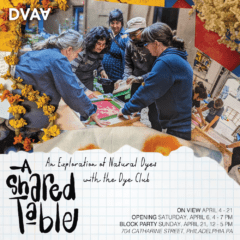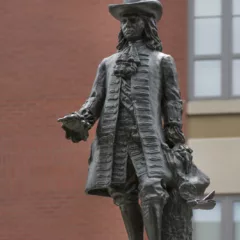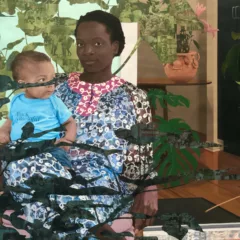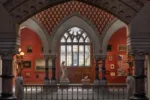We’ve been making some of the rounds, talking to a variety of Philagrafika artists in The Graphic Unconscious and Out of Print exhibits. Here are some tidbits, mostly recollected, but I noted when the conversation is based on notes.
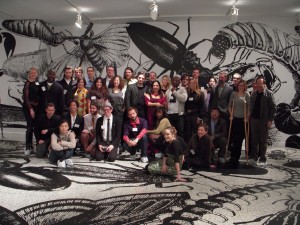
Conversation with Marc Voge, the male half of the collective Young-Hae Chang Heavy Industries, at Temple Gallery, as recollected by me–
Voge: I hate everyone. And everyone hates me.
Libby: I just read an interview of you in which you state you love everybody and everybody loves you, and what you want most is to be loved, especially for your art.
Voge: I said that? Yes that’s true. I love everybody and everybody loves me, and my art. But I can’t figure out how to make money from it.
Libby: I should think they would be easy to sell, but then what do I know.
Voge: You can represent me then. You are now my representative.
Libby: Oh, sure. Now you’re in even worse trouble. I am good at making money JK. Are you sure you don’t want to rethink this?
Someone walks over, and he introduces Libby as his art rep.
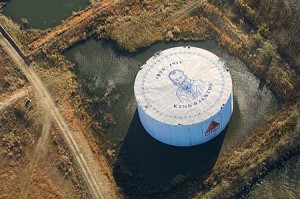
Duke Riley at the Historical Society of Pennsylvania, talking to Libby and Roberta about his visit to Petty Island and tracking down what really happened to Ralston Laird, known in the Philadelphia popular press of the 1800s as the King of Petty Island. This conversation, which took place at the Historical Society, is from notes–
Duke: All of a sudden, complaints started appearing about pigs being raised there, but pigs have been going on there for 50 years. And then the house burnt down.
artblog: So did you find proof of a conspiracy to take the land?
Duke: No. that’s my theory. The king was the first out there.
artblog: So the king wasn’t really a king, although he was really a Laird. Is Duke your real name?
Duke: Yes.
While talking to Betsabee Romero (Mexico) and Regina Silveira (Brazil), both showing at Moore College, Libby learned they both have made prints using tires.
Silveira, whose giant insects are an invading plague that swarms the gallery, spoke her work as symbolic of political corruption, crime and violence. The insects also appear atop a table in the center of the gallery, embroidered onto a tablecloth and printed on porcelain. This use of interior decoration seems quite difference from the more architectural projects in Silveira’s catalog, which she leafed through with me.
Silveira’s tire prints of ordinary tire treads, like her current installation, were architectural, printed rolling up and around the walls of a building.
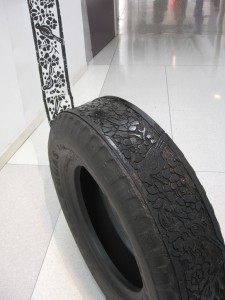
Romero carves her own version of treads onto the bald tires that frequently cause accidents that kill. Her treads are folk-looking patterns of birds, plants and figures. Her work suggests resurrection and remembrance. Romero prints her tire treads on various surfaces, from fabric to sugar. In this case she used rolls of window screening.
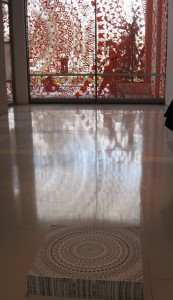
Also at Moore, Libby and Roberta talked briefly to Gunilla Klingberg. Here’s some of what I remember of our conversation more or less.
Libby: How to you pronounce your name?
Gunilla: Gunilla Klingberg.
Libby in a thought bubble: [Doh!]
Libby: How did you assemble these Philadelphia logos?
Gunilla: I worked with someone in Philadelphia who gave me a list of Philadelphia corporate logos, like Tastykake, Acme.
Libby: Is this then the Philadelphia version of a project you have done before?
Gunilla: Yes.
![Orit Hofshi- If The Tread Is An Echo[med] Orit Hofshi- If The Tread Is An Echo[med]](https://www.theartblog.org/wp-content/uploaded/hofshi-200x300.jpg)

At the same event Carl Pope was charming. He is based in Indianapolis (he grew up there and returned there fairly recently, and he is part of the Temple Gallery show with North Philadelphia billboards for local businesses using art from local student. He is also in an exhibit at the Crane. Natch he was talking about the need for a more populist, public art approach. Libby, who loves good populist art with pop culture roots in public spaces, agreed.



